Diné Way of Life
By Ray Baldwin Lewis
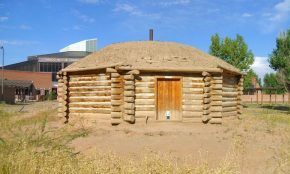 There is good in harmony – the harmony of the Navajo with the universe and all living creatures on earth. When he lives in accordance with the universe, he can expect the wealth of a clean soul that protects the whole being from the evil that preys upon his sacred dwellings.
There is good in harmony – the harmony of the Navajo with the universe and all living creatures on earth. When he lives in accordance with the universe, he can expect the wealth of a clean soul that protects the whole being from the evil that preys upon his sacred dwellings.
The Hogan is built in the manner of this harmony. The roof is in the likeness of the sky. The walls are in the likeness of the Navajo’s surroundings: the upward position of the mountains, hills, and trees. And the floor is ever in touch with the “earth mother”.
The Hogan is comprised of white shell, abalone, turquoise, and obsidian, bringing the home and the sacred mountains into one sacred unit. The home is also adorned with the dawn, the blue sky, the twilight and the night – the sun in the center as the fire.
Consistent with this harmony are prayers, songs, ideas, and plans – a desire for all good things. Fire, water, air, and soil are required for the existence and well-being of every living thing – plants as well as animals; they all become a part of the home and its harmony with the universe.
When the Hogan is finished, a medicine man blesses the home in beauty, with happiness from all directions, from the earth and the sky, with protection from illnesses and all things evil, with the promise of shelter to the family and anyone in need. During the sing or in the process of the dedication, the home is marked from the inside above the walls in four directions (representing the sacred mountains) to remind the family and all others that the home has been dedicated and blessed and thus it is in the grace of the Great Spirit.
The Hogan is a sacred dwelling. It is the shelter of the people, a protection, a home, and a refuge. Because of the harmony in which the Hogan is built, the family can be together to endure hardships and grow as part of the harmony between the sacred mountains, under the care of “Mother Earth” and “Father Sky”.
*Note: When entering a traditional Navajo hogan, it is important that you walk in a clockwise direction, by turning left (head south), and walk around to the west. Never enter or leave in a counterclockwise direction.
By Ray Baldwin Lewis
The Medicine man (Hatałii) plays a dominant role in the Navajo culture and holds great respect and honor among the Navajo people. He is important because he has knowledge of the heritage and culture of the Navajo and because he has a tie to the past, a tie to The People’s history, legends, and myths that are slowly fading away as the old die.
The Medicine man is the holder of truth about the Navajo way of life. Through his mouth, principles of goodness and prosperity are taught to the people. Thus, he is a man of great significance, not just because he is a healer or has knowledge of herbal medicine, but because he preserves the traditions and beliefs of the Navajo.
When a medicine man is called to perform a “sing”, or healing ceremony, he comes not only prepared to heal but to tell the story of the people and their beginning from the first world to their emergence into the fourth world. This is the time when he will answer questions about life and anything that has to do with man’s existence on earth. He will tell the young and remind the old that the harmony of one’s life and the universe and the order of all things is very important to the well-being of the individual.
He is a man who has spent many years and hours learning ceremonial procedures, yet he never learns more than three of these in his lifetime. He must learn songs and prayers, none of the wording of which can be missed; he must learn many different types of herbs for his healing; he must, through many trips into different areas of the country, obtain the necessary items for his sacred medicine bag; he must purify himself by many hours of contemplation in the sweat hut; he must then have faith in the Great Spirit and in himself that he will be able to heal. Through his faith the ill one has in him, he is able to render the service of healing.
The medicine man is well paid for his services. Some who are healed pay a large sum in cash plus as many as five sheep, and blankets. The ill one, along with help from relatives, must also provide food for the visitors and the family. Before money was available, medicine men used to be paid with livestock, turquoise, and rugs.


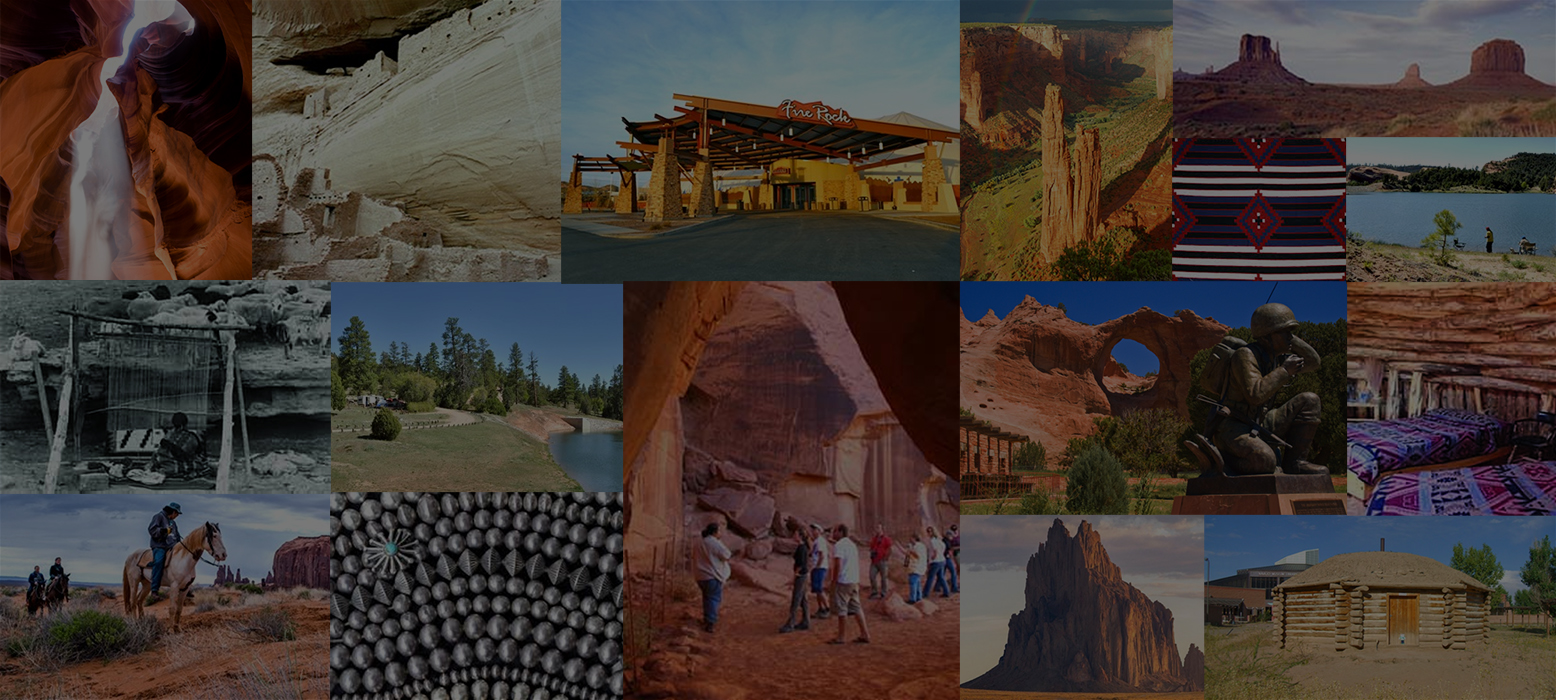
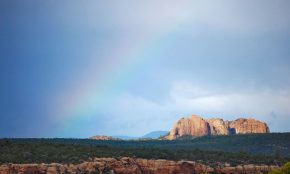 By Ray Baldwin Lewis
By Ray Baldwin Lewis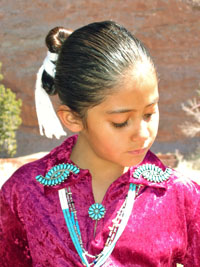 Traditional Navajo women’s clothing includes a pleated velvet, or cotton skirt (tl’aakal) with a matching long-sleeve velvet blouse (deiji’éé’), a shawl, foot or knee-high deer moccasins (kełchí), Navajo jewelry and a silver concho or sash belt. Men’s traditional dress consists of a velvet or cotton shirt, white pants and silver or turquoise (dootl’izhii) jewelry, short deer moccasins and a headband. Both genders wear their long hair in a tsiiyéél – a traditional type of hairstyle that is brushed with a be’ezo, a long dried stiff grass brush, into a bun behind the head and tied with a white sheep wool string.
Traditional Navajo women’s clothing includes a pleated velvet, or cotton skirt (tl’aakal) with a matching long-sleeve velvet blouse (deiji’éé’), a shawl, foot or knee-high deer moccasins (kełchí), Navajo jewelry and a silver concho or sash belt. Men’s traditional dress consists of a velvet or cotton shirt, white pants and silver or turquoise (dootl’izhii) jewelry, short deer moccasins and a headband. Both genders wear their long hair in a tsiiyéél – a traditional type of hairstyle that is brushed with a be’ezo, a long dried stiff grass brush, into a bun behind the head and tied with a white sheep wool string.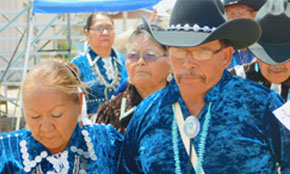 Every first week of September is The Annual Navajo Nation Fair, boasting as the largest American Indian fair in the United States – in the Navajo Nation Capital in Window Rock, Arizona. Rodeos are always a favorite in Navajo country. The Dean C. Jackson Arena will be filled with spectators all dressed in their best boots and jeans while cowboys and cowgirls compete in the All-Indian Rodeo, Senior & Youth Rodeos, and Wild Horse Races.
Every first week of September is The Annual Navajo Nation Fair, boasting as the largest American Indian fair in the United States – in the Navajo Nation Capital in Window Rock, Arizona. Rodeos are always a favorite in Navajo country. The Dean C. Jackson Arena will be filled with spectators all dressed in their best boots and jeans while cowboys and cowgirls compete in the All-Indian Rodeo, Senior & Youth Rodeos, and Wild Horse Races.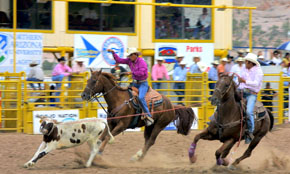 Did anyone say food? Delicious, hot fry bread and Navajo Tacos are just a sampling of the cuisine on the menu at the Native Food vendor complex. At the Fry Bread contest you’ll see how it’s really made… from making a fire, mixing and patting the dough, and frying to golden perfection. Have a picnic with friends at the Free Barbeque on Thursday. You’ll be licking your fingers for sure! And what’s a fair without a stick of cotton candy from the Carnival Midway?
Did anyone say food? Delicious, hot fry bread and Navajo Tacos are just a sampling of the cuisine on the menu at the Native Food vendor complex. At the Fry Bread contest you’ll see how it’s really made… from making a fire, mixing and patting the dough, and frying to golden perfection. Have a picnic with friends at the Free Barbeque on Thursday. You’ll be licking your fingers for sure! And what’s a fair without a stick of cotton candy from the Carnival Midway?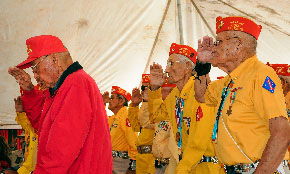 The Navajo Code Talker’s served in all six Marine divisions from 1942 to 1945 and have been credited with saving countless lives.
The Navajo Code Talker’s served in all six Marine divisions from 1942 to 1945 and have been credited with saving countless lives.